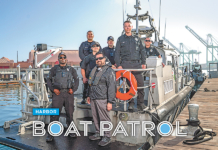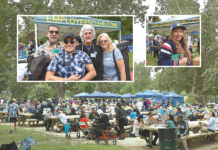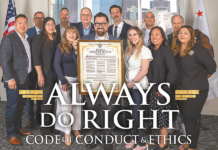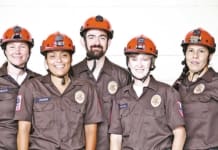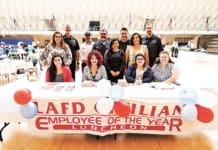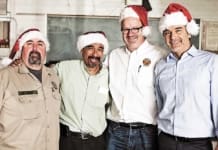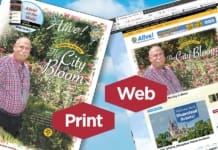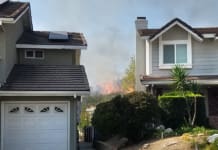Alive! photos by Summy Lam, courtesy LADWP, and as noted.
Los Angeles Dept. of Water and Power surpasses milestone of building, deploying and funding 10,000 commercial electric vehicle chargers two years early. And they’re only getting started.
Los Angeles is in the middle of a building boom – building charging stations for the oncoming waves of electric vehicles as the world makes a tectonic shift toward sustainable energy and cleaner modes of transportation. In fact, the City has more charging stations than any city in the United States. And that number is surging exponentially.
World leadership in widespread electric vehicle charging comes thanks to a team of engineers, business analysts, strategists and highly skilled construction workers at Los Angeles Dept. of Water and Power. The innovative and kinetically busy team works across multiple divisions and in close coordination with other City agencies to accomplish its primary objective: increasing access to EV charging for all Angelenos and those who commute through or work in the City of LA.
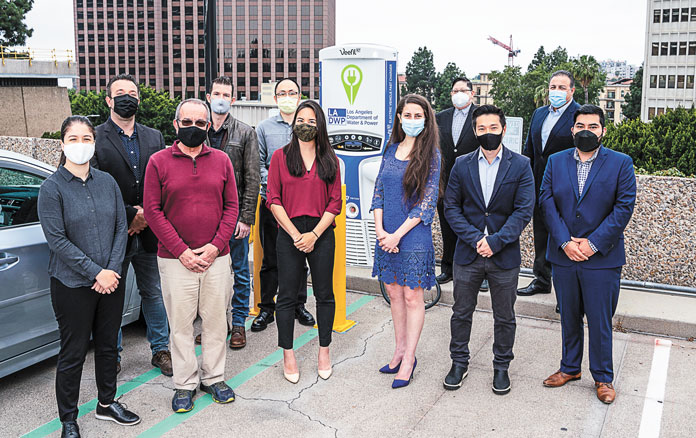
So fast moving is the team that in January the City blew past a major milestone – building or funding 10,000 commercial electric vehicle charging stations two years early. At press time, the City has surpassed 12,000 stations and is on its way toward its next goal – 25,000 by 2025.
The commercial Electric Transportation program plays two roles – it offers generous rebates to commercial builders who want to construct their own stations; and building the rest with its LADWP construction team, usually for its own customers at publicly accessible LADWP parking lots or in partnership with other City departments like Rec and Parks, Public Works/Street Lighting, Library, and others.
In this month’s issue, read all about the program that leads the country in electric vehicle charging.
The Club thanks Paola Adler, Sr. Public Relations Specialist, for her assistance in producing this feature. Watch this video about LADWP’s Electric Transportation program milestone:
LADWP EV GroupsiElectric Transportation Programsi
EV Service Designi
iElectric Vehicle Infrastructurei
iConsumer Rebate Processing Uniti
iElectric Vehicle Charger Construction and Maintenancei
|
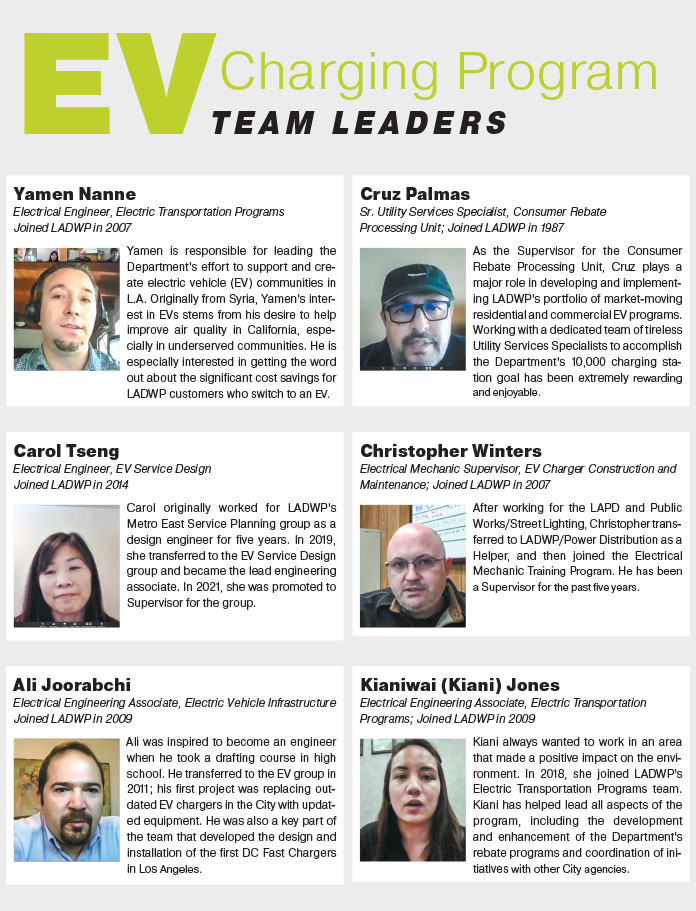
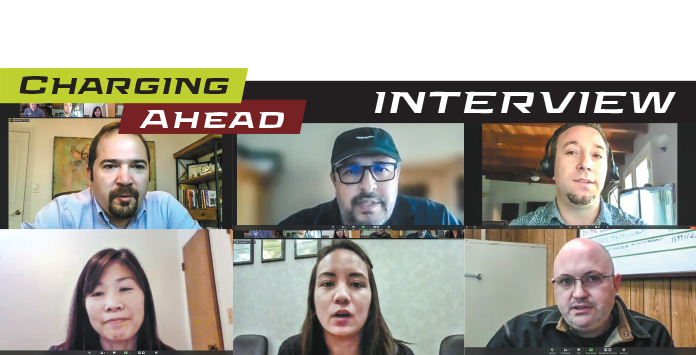
Fast Charging, Fast Growing
On May 5, Club COO Robert Larios and Alive! editor John Burnes interviewed representatives of the LADWP team that just surpassed the milestone of building and/or funding 10,000 commercial electric vehicle charging stations. The interview included Yamen Nanne, Electrical Engineer and Supervisor of Electric Transportation Programs, 14 years of City service; Kianiwai Jones, Electrical Engineering Associate and Assistant Supervisor of Electric Transportation Programs; 12 years; Ali Joorabchi, Lead Design Engineer, Electrical Engineering Associate for the Electric Vehicle Infrastructure Group, 12 years; Cruz Palmas, Sr. Utility Services Specialist, Supervisor for the Consumer Rebate Unit, 34 years; Christopher Winters, Electrical Mechanics Supervisor in charge of the Installation Repair and Maintenance of the EV chargers, 20 years; and Carol Tseng, Electrical Engineer and Supervisor for the EV Service Design Group, 7 years. The interview was conducted via Zoom due to pandemic protocols.
Alive!: Thanks everybody for talking to Alive! Let’s start with a broad overview of the commercial electric vehicle charging station program.
Yamen Nanne: Happy to speak with you, no problem. LADWP’s EV Program aims to contribute towards the electric transportation goals and the clean air goals of the City. We’re doing this by accelerating the deployment of electric vehicle (EV) charging infrastructure needed to spur EV adoption by our customers and residents. We do this by taking a three-pronged approach: Number one, we’re leading by example by deploying charging stations directly at LADWP facilities, parking lots and customer service centers. Two, we’re providing funding to our commercial customers and sister agencies that are installing charging stations. We’re providing the funding through rebates, and with sister agencies, we’re engaging in memoranda of understanding where we provide funding for their charging stations that they install. And three, we’re educating and informing the residents of LA about the direct and societal benefits of purchasing and driving EVs.
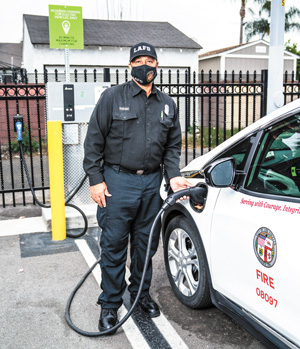
Our commercial charging station program attempts to cover the entire geographic spectrum of EV charging, whether it’s public charging; workplace charging; charging at multifamily residence and condos; and fleet customers that are trying to electrify their large trucks, vans and shuttles. We’ve had the Rebate Program ongoing since 2013. In 2019 we made some very big changes to the program and provided a lot more funding from the proceeds that we’re getting from the California Air Resources Board, and because of that we’ve seen a very, very large uptick. Prior to that change we had about 2,500 or so commercial charging stations in the City of LA. But since then, in the last two years, we’ve brought on another 9,000 commercial charging stations in LA. We now have a total of a little bit more than 12,000 charging stations, and of those, 9,000 have gone through our rebate program. The rebate program has been very crucial in meeting this milestone two years early – we had initially set a target of getting to 10,000 by the end of 2022, and we’re already at 12,000. A big portion of that comes from our own installations – we’ve installed close to 1,000 charging stations now, many of them are for our own fleets, but also there are about 105 that are publicly accessible to City of LA residents and people coming to LA. City agencies have also contributed another 1,300 charging stations. We’re really happy with our overall program, and we think we’re just at the tip of the iceberg with a lot more to come in the future.
It’s an accelerating program because there’s an accelerating need and interest, I imagine. To specify here, this program, the landmark that you’ve achieved, is both building some of your own but also funding through your rebate program. The 12,000 is a combination of the two.
Yamen: Yes, absolutely. Our goal is to build the infrastructure to support the continued EV adoption in the City of LA, and we’re doing that by providing funding for customers who are installing those directly, but also by building those installations directly on our own facilities where it makes sense for us.
And the EV program aligns with the Mayor’s sustainability plan.
Kianiwai: We work really closely with the Mayor’s Sustainability Office. The Mayor launched the Sustainability Plan in 2019 that outlines the City goals, and a lot of those are very aggressive. That plays a big part into what we do and how we get involved in certain projects. We join with other City agencies to provide funding for things like bus electrification and more street light chargers, all in alignment with the Mayor’s Sustainability Plan.
Yamen: The Mayor in the Sustainability Plan has literally set the blueprint for what has been accomplished, so we really owe a debt of gratitude to him and his Office of Sustainability. They’ve produced probably one of the most premier sustainability plans out there.
We also owe a level of gratitude and thanks to the management at LADWP who have really championed the efforts to push for more EV charging in the City and have facilitated staffing and resources to us. And also I want to mention our customers because they are taking on a lot of risk in pursuing these EV charging projects. Of course there is benefit to them, but there is a lot involved in getting these done, and getting the rebates can sometimes be tedious. We owe them a lot of thanks as well for being patient with our processes in terms of how things get done in a city.
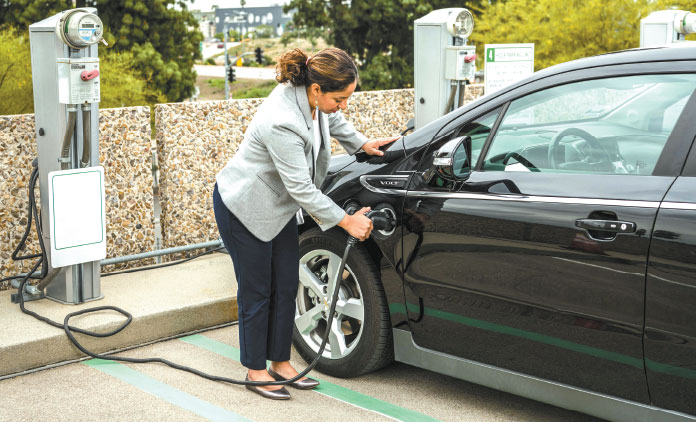
Got it, thanks. Where are these charging stations being installed in the City of LA?
Kianiwai Jones: The charging stations in the City are being installed in a variety of locations. We have a goal of installing stations at home, at work and on the go. For the commercial charging stations, that means multiunit dwellings like apartments and condos; workplaces, which could be fleet vehicles or for employee charging; and then also public charging stations, and there’s a wide range of facility types where public stations can be installed. But usually, we focus on places where vehicles dwell for longer periods of time, especially for Level 2 charging, which is a little bit slower, and also locations where there are amenities for the drivers, like shopping areas, universities and so forth.
And then of course the City of LA has installed public charging stations throughout the City at LADWP and City facilities. We work closely with Public Works/Street Lighting, which has done many street light installations; Rec and Parks at their facilities; DOT at parking structures; Library locations; at LAX; and also at the Los Angeles Zoo. They’re all over the City. A goal of ours is to make sure that we get them equally distributed as much as possible.
Ali: At our own facilities, there are multiple needs. We have employee needs and our own fleet needs. We analyze each facility to see how many employees are there, and we try to look into future as we are electrifying our fleet vehicles. At our main headquarters, we brought in 5,000-amp service to provide EV charging for all the parking spots for all the employees. And we also have a big fleet of cars in that building, so we’re installing fast charging for the fleet cars. We try to put in chargers at our receiving stations. We have different headquarters located throughout the City for different organizations where they need EV charging for fleet and their employees. We get requests from them, too.
Kianiwai: We’re always looking for opportunities to install charging stations at our facilities, and we’ve installed a number at customer service stations. We’ve installed them in Crenshaw, and we are working right now at an active project in the Valley. We’re definitely looking at ways that we can get more of those out there at our facilities as well.
If I can phrase this correctly, what you do is mostly industrial installations. Let’s say, if a retailer like Target wanted to install ten charging stations on its lot, would that be handled through this group?
Yamen: The rebate program makes those projects eligible for funding. We could actually provide up to 40 charging station rebates per site.
Got it. A question on definitions – what is a Level 2 charger?
Yamen: If you look at regular, premium and supreme gas as an example, we’ll call Level 2 premium because it’s a faster charge – about two to four hours for a full charge, but not super fast like a DC Fast Charger, which can get you almost fully charged in 30 minutes. So those are the chargers that are 240 watts, and these are the majority of the 12,000 that have been installed. Out of the 12,000 right now, about 11,700 are Level 2. We have only about 300 DC Fast Chargers [ie, Supreme instead of premium, and Level 2 would be premium] in the City of LA because the Level 2 is less costly in terms of a capital investment, and there are also a lot fewer utility upgrades required to do that. Right now we’re seeing the biggest demand in Level 2.
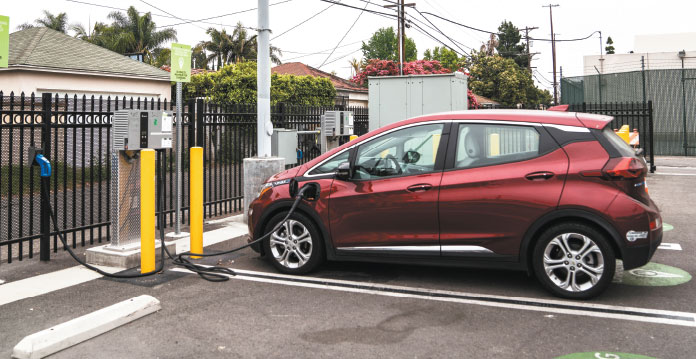
Equity in Locations
Is LADWP prioritizing disadvantaged communities?
Yamen: Yes. Equity is a critical component for our program. We’ve taken several steps in our program to monitor where the program funding is going. We’re making specific programmatic changes to ensure that a fair share of funding is accessible and utilized in disadvantaged and underserved communities as defined by the State of California. We’ve implemented a $1,500 used EV rebate program for our customers and residents in the City of LA towards the purchase of a used EV. The intent of that program is to make used electric vehicles more affordable for those who want to purchase them. About 25 percent of the program participants are in disadvantaged communities (DAC). We are looking at different ways to try to increase that percentage even more because we know that more than 50 percent of the City of LA is labeled as disadvantaged communities by the state.
Also more recently we implemented a $1,000 rebate to our Commercial Level 2 Charging Station Rebate Program in addition to the $4,000 per charging station. That would add up to $5,000 per charging station located in DACs. We saw a good response to that – more than 30 percent of the applications that came in in the last round of funding that we released went to requests located in disadvantaged communities. We’re trying to make it more attractive for EV installers to install more chargers in these communities. And finally, we are working with our communication and public affairs team to develop an educational and outreach plan to provide more information about the benefits of EVs specifically for DACs and low-income communities.
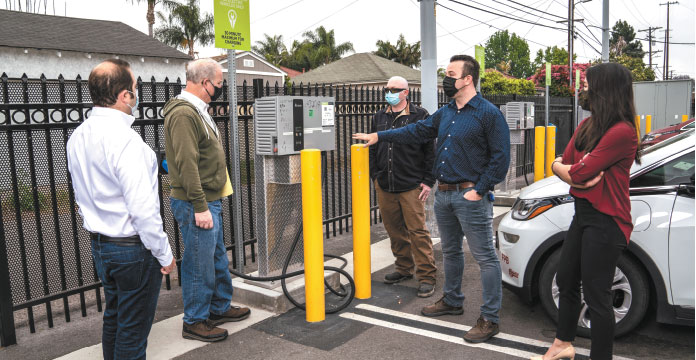
Approvals and Rebates
What’s the application process for projects and rebates for customers?
Carol Tseng: Yes. In general, customers must submit their applications and their plans to the LADWP online portal, and our engineers will review their request and coordinate with the customers and then determine the method of service. After they receive our approval then they can start construction. They also will coordinate with Building and Safety, and once the customer passes the inspection and receives the release from Building and Safety and LADWP, then we’ll go ahead and energize the service.
Cruz, can you talk a little bit about the rebate process?
Cruz Palmas: Sure. Carol’s process precedes ours. We’ve grown substantially, exponentially, since 2018, as Yamen said. We’ve enhanced the process as we’ve grown, getting input from contractors, customers and internally, focusing on developing the program. From that input we developed the reservation process, which wasn’t available before. Customers are able to reserve funds for new projects. The old method was to apply after the project was complete, so if there was something that was ineligible, the customer had already spent all that money and been rejected, right. The reserve feature was I think one of the most important enhancements to the program.
We process everything in-house. We have a very well developed process flow of how the application’s going from beginning to end. We try to provide the best customer experience we can. This past year was very challenging, but with cooperation from IT getting everybody literally up online within a week, there wasn’t a pause on my team’s ability to keep processing applications and moving the program forward. It’s been challenging, but I have a tremendous team, and they were able to pull it through and keep it going.
Kianiwai: From a rebate program perspective, we don’t decide to fund one project or not fund another project. It’s open to all of our customers and really in any area. We are trying to incentivize projects to happen in areas that need charging stations the most such as disadvantage communities. We want anyone who’s interested in installing. The funding is available for them.
Yamen: Cruz’s team has paid out about $30 million in rebates since COVID started. It’s been really good productivity even with all the challenges.
Just during COVID.
Cruz: Yes.
That’s tremendous.
Yamen: Keep in mind the process had to be touchless – meeting customers outside in the front of the building to give them their check, and things like that. The main concern was safety as we tried to get the job done.
Kianiwai: From a customer’s point of view, from A to Z, the first thing the customer does is apply to EV Service Design, Carol’s group for review of their plans to look at the electrical load they’re planning on installing and making sure our facilities are sized adequately. That’s the first step. And then they can submit to the rebate program, and they are able to submit for a reservation. Previously they had to go through the whole project, complete it and then they could submit to get the check. We’ve received feedback from contractors that they would like to have the assurance that the money is reserved for them and that it doesn’t run out before the project’s completed. So now they’re able to apply for a reservation.
We review a certain minimum level of information about the project, and then we’ll issue the confirmation and they can proceed with their project. They continue to work with Carol’s group in EV Service Design to make sure everything is done according to our requirements. Once the project is completed, they come back to the rebate program, submit their final paperwork, and then we can go ahead and process their checks. That’s Cruz’s group.
How long does that take from the very beginning of taking in the application to the cutting of the check?
Kianiwai: That varies a lot. Every project is different in scale and scope. It can be anywhere from six months to even two years.
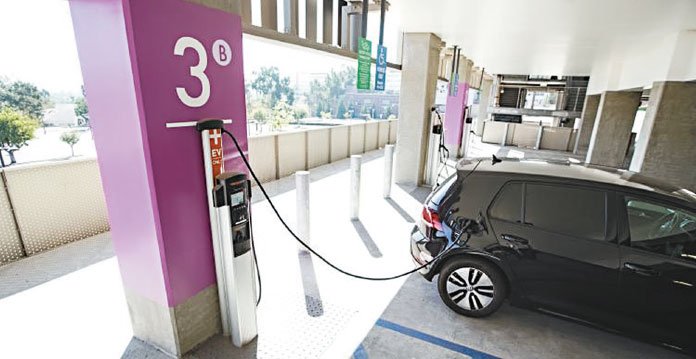
Building a Charging Station
What is involved in building an EV charging station?
Christopher Winters: First off I meet with the engineer and do a job walk to assess the scope of work. We have to determine whether we have the infrastructure available to provide power to these EV chargers, and if not, what upgrades are needed. We establish open lines of communication between us and the Engineering Group so we’re all on the same page and we know what the deadlines are, what the expectations of the customer and the Engineering Group are so we can meet that in time.
Ali Joorabchi: We work closely with construction from the early stages of the project. We first have to reassess the facility and determine the charger needs, and we have to look into things like how many parking spots are there, how many employees are there, how many fleet cars are there. The next thing would be how much power we have. If it’s not enough, we submit requests to Carol’s group to bring in new power for that facility. After that it’s design – we start the design process and prepare all the design documents, the estimates and all the necessary safety instructions. Then it’s procurement, purchasing the EV chargers and the electrical equipment, the switch gears, the disconnects, the wires and anything else that is needed for an installation. During the construction, we troubleshoot challenges that arise. And then at the end, we coordinate to commission the chargers.
Yamen: One of the things you might not think about – an EV charging station project is just like any construction. Right now we’re deploying charging stations at our Van Nuys customer service center across the street from a residential area and a school district. As we planned, we wanted to make sure we were not going to disturb the activities happening around us. A lot of effort went in to coordinating with our communication and public affairs team and putting signs about construction times, safety signs, et cetera.
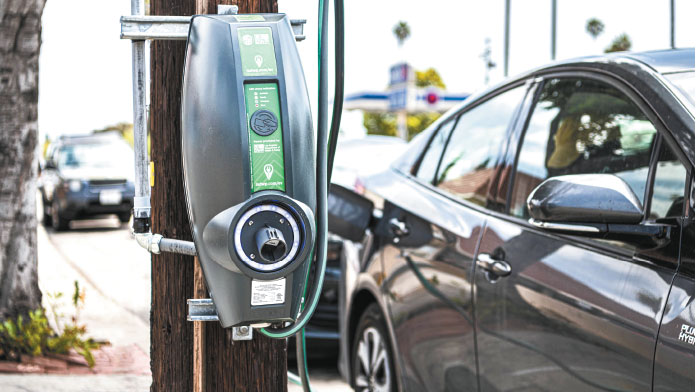
Challenges
What are the challenges? What have you learned?
Christopher: We had such a large goal to meet. I would work with Ali to get his projections in advance to come up with a game plan. We never wanted a project to come to a stop because we were waiting on materials. Also, we have worked from the Valley to San Pedro with a crew of about 15 guys, and that’s a wide area to cover. That’s why we needed to have a tight schedule to meet these deadlines.
Ali: Yes, those are very great challenges, so it takes a lot of planning and close work with the construction to have everything in place.
But in general the biggest challenge is the power, and that’s what we rely on Carol’s group because these chargers take a lot of power, and most facilities don’t have adequate power. Looking forward, bringing the power and the infrastructure will be the hardest thing and the greatest challenge for these jobs. Many of our buildings are 80 to 100 years old. The next challenge for us is to work in these buildings and bring power so it looks nice and the chargers are where we want them.
Christopher: For example, some of these chargers at peak demand can pull more than what 15 houses would take from the grid.
I didn’t realize that.
Yamen: With the quick build-out over the last two years, one of the key lessons learned is the pacing and staffing. What we learned the hard way is we released a lot of funding because we got good proceeds from the California Air Resources Board. We wanted to put that out quickly so we could meet our goals. But with staffing, we didn’t anticipate that COVID would come so quickly. Fortunately we were able to set up a task force where many groups contributed one or two engineers from their team, and they were able to review the requests from the customers. We were able to process the requests a lot quicker. The same with Cruz’s team – hundreds of applications came in at one time, and he had to get staff from other groups to help out on processing.
Cruz: To put it in perspective, the current program was launched in 2018. That year, we paid only like $3.1 million. In 2019, that jumped exponentially to $12.5 million. And now we’re talking $30 million.
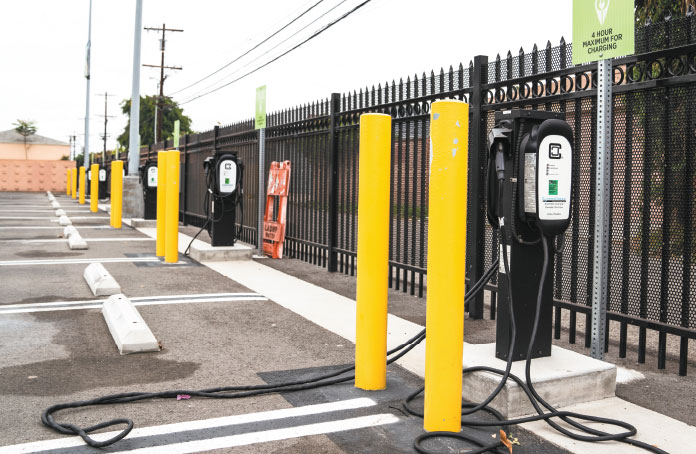
Fast-Growing Market
How fast is the EV market growing in the City of Los Angeles?
Yamen: In the last two years alone, we’ve seen about 400 percent growth, and again it was highly driven by the funding that we released. We had to signal to our customers in the market that we’re in it for the long run and we’re serious about getting to these goals. In 2019, we went to our board and said, “We’d like to put a program in place that is going to signal to our customers in the EV community that we are serious about meeting these goals. As long as we’re getting these proceeds from the Air Resources Board, allow us to spend up to $40 million per year incentivizing out customers to install charging stations.” That approval by our board and that commitment on paper really signaled to the industry and our customers that we really want these charging stations to be installed, and we’ve seen just an unbelievable response since then.
Kianiwai: Two of the biggest barriers to adoption that we’ve seen are the vehicle cost, which is coming down rapidly due to declining battery cost, but also the accessibility of charging stations and this range anxiety that people have. It’s really important for us to get as many stations out there as possible to facilitate the adoption and to keep things moving in the direction that we want. The market in 2016 was so different when we set the goal of developing 10,000 charging stations. It’s changed drastically. Meeting even more aggressive goals moving forward is going to be important as well.
It also makes a difference in the rebates that the customer can assign the rebate to another entity. Oftentimes we see customers assigning it to contractors, and contractors will often take on the burden of the upfront costs given that they’re going to be receiving the rebate, so the customer can sign an agreement with them saying, “We agree to assign the rebate to you and you guys are going to go ahead and do this project for us.” Oftentimes we see that the customer doesn’t pay anything, so it can be a really great proposition for them. And of course as a landlord or property owner, you’re getting these amenities that increase the value of your property, so it’s an attractive proposal.
Success Stories
Talk about your favorite or your best success story so far.
Cruz: Just being able to adapt to that growing demand. We leveraged every tool we had internally. With my unit, it’s not just one success but a compilation of building on what we had and using whatever tools and resources we had to get that done.
Ali: For me it was a collaboration of everyone here – new business, the construction group, and that’s the seven megawatt service that we brought into JFB. We’ll put a charger for every single parking spot and cover the entire building. The 5,000-amp transformer is one of the largest services that gets installed, and we did two of them in our facility. That to me is one of the biggest achievements. Going to work, I drive by some of the chargers we installed, and each time I see a car parked there and charging for free, it gives me a good feeling. It’s something that we did. It’s a benefit to the community, and we are building up our process to put the same chargers in more facilities.
Yamen: I don’t know if you’re aware of the Website called Plugshare. It tracks where all the charging stations are. LA is ranked number one as the top EV-friendly city in California. There are 2,783 publicly accessible charging stations in Los Angeles, and we are number one in California and in the United States, maybe even the Western Hemisphere. We have far exceeded any other city in the state or even in the United States. I think that is testament to the work that’s been done by all of us here and also the other City agencies that have put out these charging stations. We’re really proud of that.
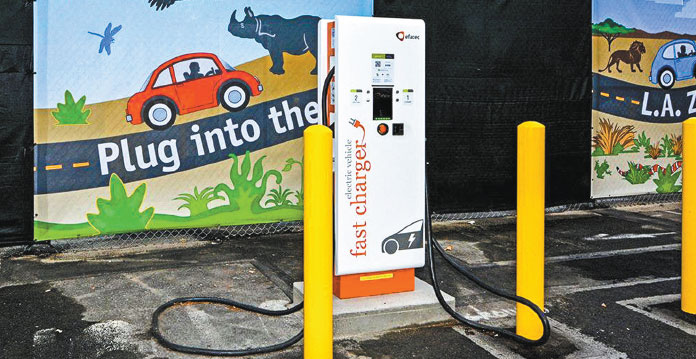
Legacy
You have to feel a legacy looking back at this project. When you talk to your family or friends about this, you have to feel great pride that played a role in this.
Cruz: I’m getting ready to retire maybe sometime soon. I’m the oldest guy in the crowd here and it is a tremendous sense of accomplishment. I do take a lot of pride in knowing I was a part of this initiative, not from the very beginning but when it really took off, and I was able to contribute. I’ll able to share that with my kids, grandkids and so on, and I’m very proud of that.
Yamen: Absolutely, I look forward to the day when my children are able to drive. I have two boys, eight and five, so I hope in ten years or so they can come to the City of LA and charge at one of the public charging stations, and I can say I had a role in helping to make that happen. It is really important for us as a City that has dealt with air quality issues for such a long time. That’s what motivated me to come to be part of the EV program. I actually transferred from another group about two years ago and believe it or not, I took a pay cut to come to the group because I really wanted to be a part of this effort and help to promote electric vehicles in the department and in the City of LA.
Kianiwai: I think it’s exciting. We’re at the beginning of everything; things are really taking off. We have a focus in really supporting the industry and making this a sustainable industry. I see these rebate programs and all of the support that we’re providing as similar to when investors give startups that initial funding to really get them off the ground. We are helping that industry to build that case and to build the platform they need. It’s a difficult thing to do when adoption hasn’t really caught on and a lot of these charging station operators are operating at a loss in the beginning. The key is to put charging stations all over the City, but you won’t see that utilization in the very beginning. You’re betting on what’s happening in the future. To me it’s really exciting that we’re playing a really big part in making sure that this is sustainable for the businesses that are betting on this bright clean future of electric transportation.
Do other cities look at LADWP as leaders in EV charging technology?
Yamen: Absolutely. If you look at what’s happening in the United States now even at the federal level, a lot of the policies that are now being pushed by the Biden Administration have been inspired by what is happening in California and specifically in the City of LA. We’ve had an EV program for more than ten years now. We’ve been pushing it since EVs first started being produced by major manufacturers, and you’ll find several references to LADWP rebate programs in publications about what cities can do to push EV charging in their municipalities. And myself and Kiani and others here have been interviewed by several research organizations that are looking at how we design and implement our programs, and those interviews have been published in several research reports that are now being used as references for other cities on how to develop the EV ecosystem in their own regions.
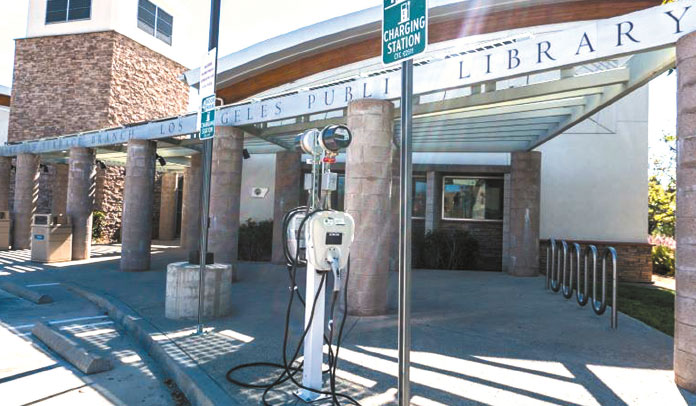
A Passion
What do you love about what you do?
Cruz: I expected these last couple of years to be in retirement mode, just taking it easy. When I came to this unit, it was kind of slow. But not now – these have been the busiest last few years in my LADWP career, and it’s been fun and exciting. What I love about it is working with some of our new employees, some of my staff members, with the energy and ability to mentor them. I love the work. It’s been nonstop and exciting. I thought I’d be enjoying something quiet, but I’ve actually enjoyed being on the cusp of something so cutting edge, new and important, that’s going to improve the City.
Yamen: What I really like about what I do within the department and specifically within the Electric Transportation Program is being a driver in transforming the city. We are literally on the forefront of transforming the transportation sector in the City of LA. When I come to work I know that as much work as there is on my plate and as challenging as it seems on a day-to-day basis, I know that I’m contributing to a transformation of an industry that typically only happens once every hundred years or so. I really love being involved in that. And it’s not just technical work. There’s a lot of communication, coordination, presentations … there’s just a variety of things that we do. We touch so many different groups.
Kianiwai: We also are very involved at a policy level. We sit in on meetings at the state level with coalitions of manufacturers of these EVs and other stakeholders in the industry. It’s all very exciting and educational. That idea of doing new things every day – we are constantly trying to think about how we can enhance our programs, develop new programs and develop new initiatives. There’s a lot of freedom and creativity to do new things.
The impact that we’re having on the environment, on the City, is very important. Back when I was right out of college, I was interning at a Department of Defense company, and I had this existential moment like, “What am I contributing to in the grand scheme of life?” I didn’t feel good about what I was doing, whereas here, working in electric transportation, you feel really good about what you’re doing and the positive impact you’re having in the world.
Ali: I’m a design engineer and I’m fascinated by the technology behind the EV chargers, the batteries, the EV cars and the rate that it’s changing. Every day is new. Also I really enjoy the challenges and the creativity and the collaboration that it takes to design and bring these EV chargers in all the facilities and especially working with construction. When you see something that you put on paper actually get built and used and all the benefit added, it fascinates me. It’s what I like about my job.
Carol: In Service Planning we interact with customers almost every day. I do like interacting with customers even though it may not be the case for most people because at times it can be difficult. But I do enjoy it.
I also like the appreciation I receive when I’m able to help them with their projects. Most of the time it’s just a question how to submit the application, to get through the process, or how to design a job. I also feel a sense of fulfillment when I see a project get completed and energized. I’ll be driving by and I see all those EV chargers being installed and being used.
Christopher: I like the customer interaction. I meet the customers using these chargers, and it’s always pleasant. I feel that my interaction with them can also help paint LADWP in a better light and create a more positive outlook on our company.
Great. Everybody, what a good interview. Thanks for taking the time to talk to Alive! readers throughout the City.
Cruz: Thank you.
Yamen: Thank you.
Kianiwai: Bye!
Christopher: Bye.
Carol: Bye.
|
BEHIND THE SCENES
|


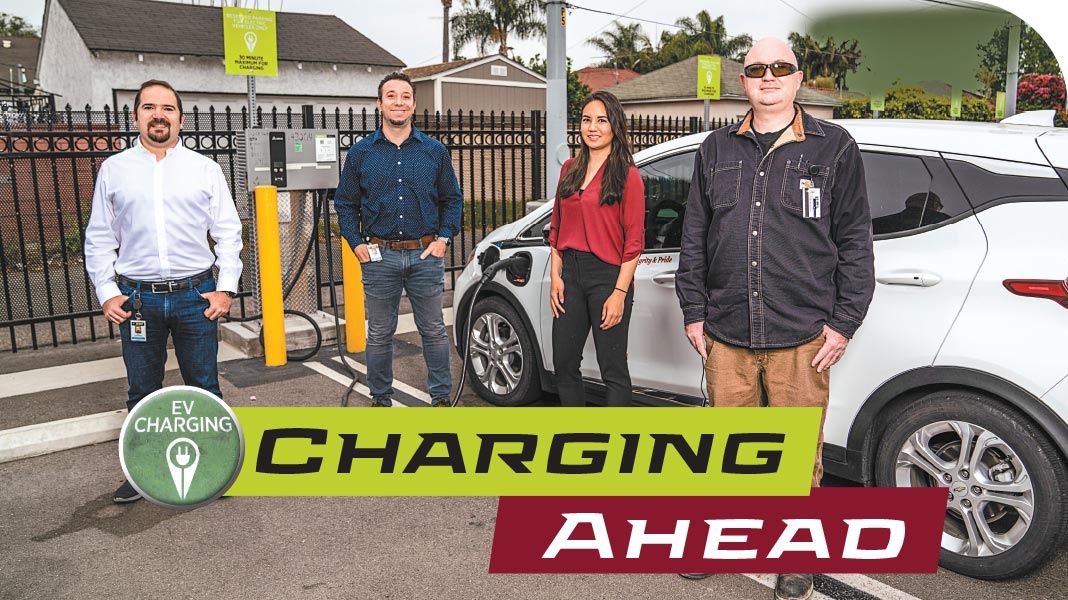

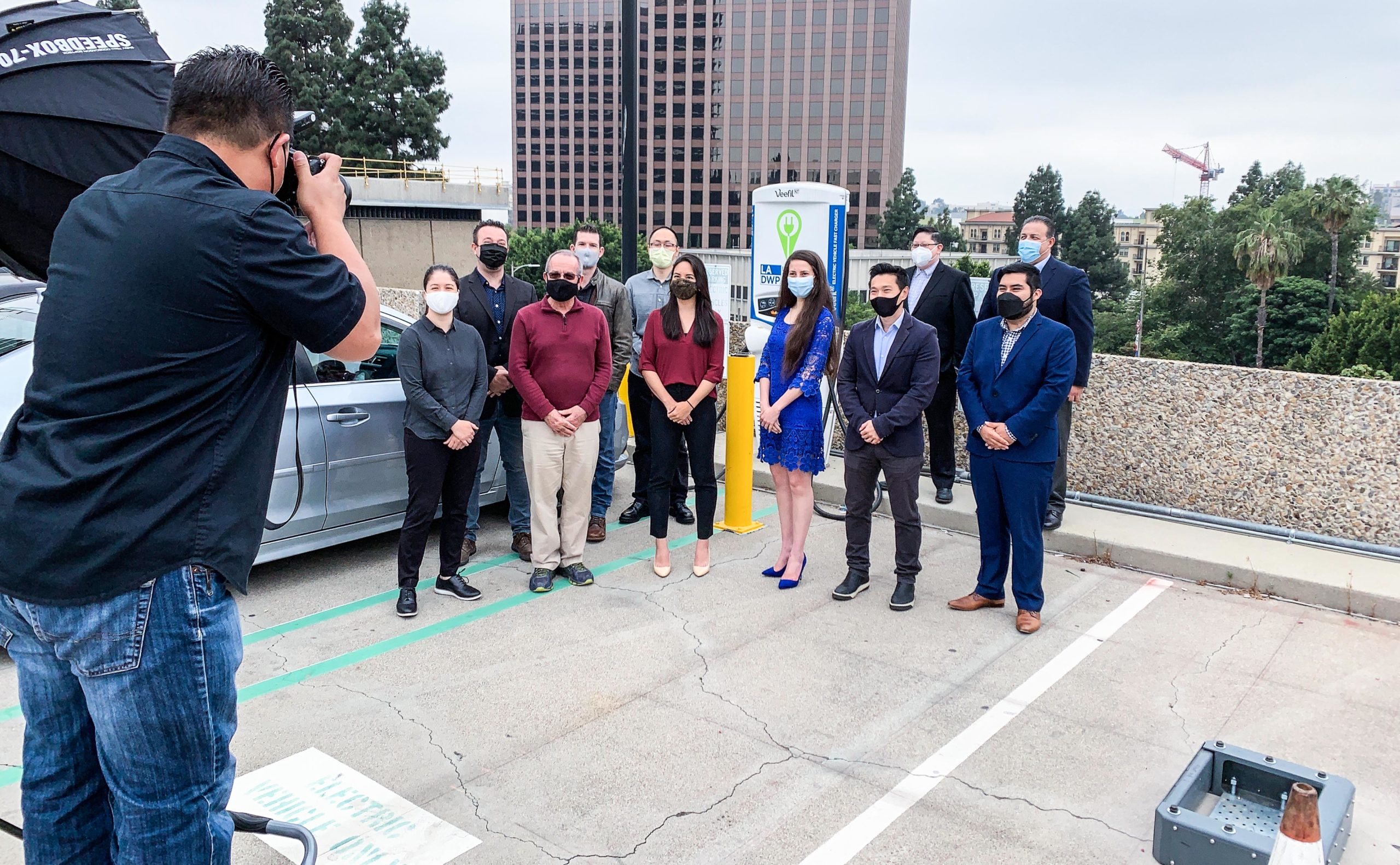 Club Director of Marketing Summy Lam photographs members of the LADWP team that designed, built, funded and maintains the City’s electric vehicle charging program, at the John Ferraro building downtown.
Club Director of Marketing Summy Lam photographs members of the LADWP team that designed, built, funded and maintains the City’s electric vehicle charging program, at the John Ferraro building downtown.
